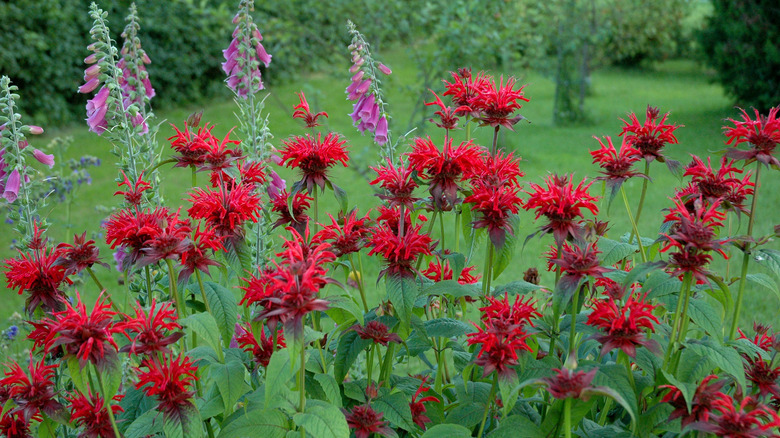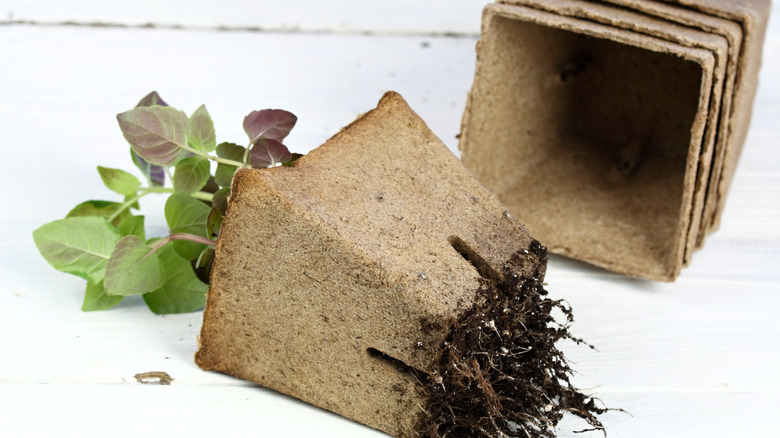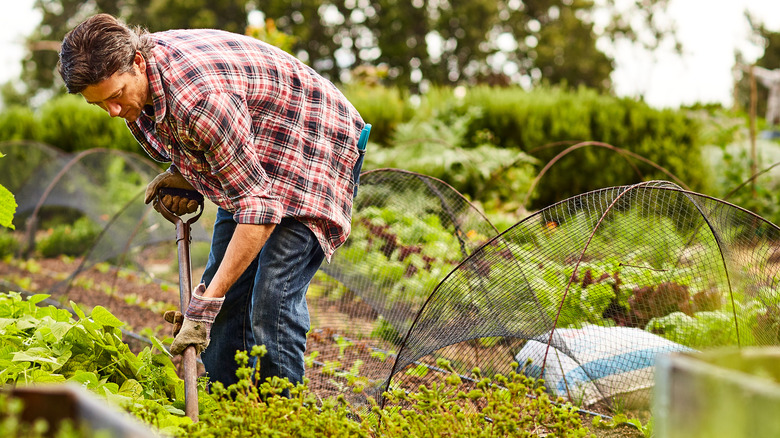Prevent Bee Balm From Taking Over Your Garden With These Helpful Tips
Bee balm has tons of benefits for your garden and the wildlife that visit it. From bees to butterflies to hummingbirds, the nectar in its flowers keeps critters well-fed. Plus, attracting insects and birds to your other pollination-needing blooms ensures you get a steady supply of vegetables and fruit from your garden. It's also deer-resistant and a natural pest insect repellant. Though the plant is native to America, it does have one downside. Let it roam free through your garden beds, and it will quickly take over. Controlling it isn't complicated; you just need to divide it once a year, grow it in containers, or consider dwarf cultivars.
Bee balm (Monarda spp.) can be found across the continent, though it originates in eastern North America. You may know this plant by its other common monikers: scarlet monarda, bergamot plant, horsemint, Oswego tea, wild bergamot, and spotted horsemint, to name a few. It grows almost anywhere in the wild — from prairies and wildflower meadows to forest borders. It's a member of the Lamiaceae, or mint, family, so the leaves smell and taste slightly minty. Given the full sun it prefers, the plant is one of those easy-grow perennials that will bloom every autumn; flowers are red, lavender, pink, white, or yellow. Depending on the cultivar, it grows up to 4 feet high and survives even the harshest conditions of USDA plant hardiness zones 3 to 9.
What makes bee balm so prolific?
"Does anyone else have trouble controlling bee balm?" Questions, or perhaps more aptly, laments concerning bee balm and its penchant for vigor — like this one from the popular gardening forum Dave's Garden — can be found all over the internet. And for good reason. Bee balm can stretch out as far as 2 to 3 feet away from where it was initially planted. As it does so, the inner crown (the middle of the shrub) dies away. Without control and with ideal growing conditions, bee balm can quickly take over a garden bed and outcompete its neighbors for resources.
Bee balm reproduces more by underground rhizomes and overground stolons than seeds. Though they resemble roots, rhizomes are modified stems that, protected by the soil, help a plant propagate itself even in harsh growing conditions. They use nodes, internodes, and the budding ability seen more commonly on aboveground branches to replicate and spread. What's more, few plants can rival the hardiness of this native shrub: it can live through drought and freezing temperatures, which is why some gardeners consider it weedy, aggressive, or even invasive.
Combating bee balm spread
To successfully grow bee balm plants, they should be dug up and divided seasonally — starting at three years old. This is the most oft-recommended advice to stop the plant from encroaching on neighboring greenery. Dig up the entire plant and cut out healthy, growing sections using a sharp, clean knife. Make sure each section has some roots attached to it. Discard or compost the dead center of the mother plant, and replant or gift all your bee balm babies. Aim to do this in either spring or fall when the plant is still in growing mode, giving any replanted plants the best chance of settling into their new location.
If you, like Mickey Rathbun — a passionate gardener and writer for the Daily Hampshire Gazette – are reluctant to "just pull out and discard random skeins of roots and shoots," there are other solutions. You can grow bee balm in a patio planter or containers buried in your garden beds. Other bee balm barriers include fences, growing at the back of an already crowded pollinator garden, or, like Philadelphia garden educator Donna L. Long, planting it "in a garden bed with barriers of cobblestones and cement." She also advises keeping the soil dry, not moist — making the plant more likely to stay put. Some dwarf Monarda cultivars are bred for ground cover, making them less enthusiastic spreaders; alternatively, pop them into a forgotten area of your garden and embrace the takeover.


